Thomas Christopher O’Brien
14 January 1901 – 23 January 1995
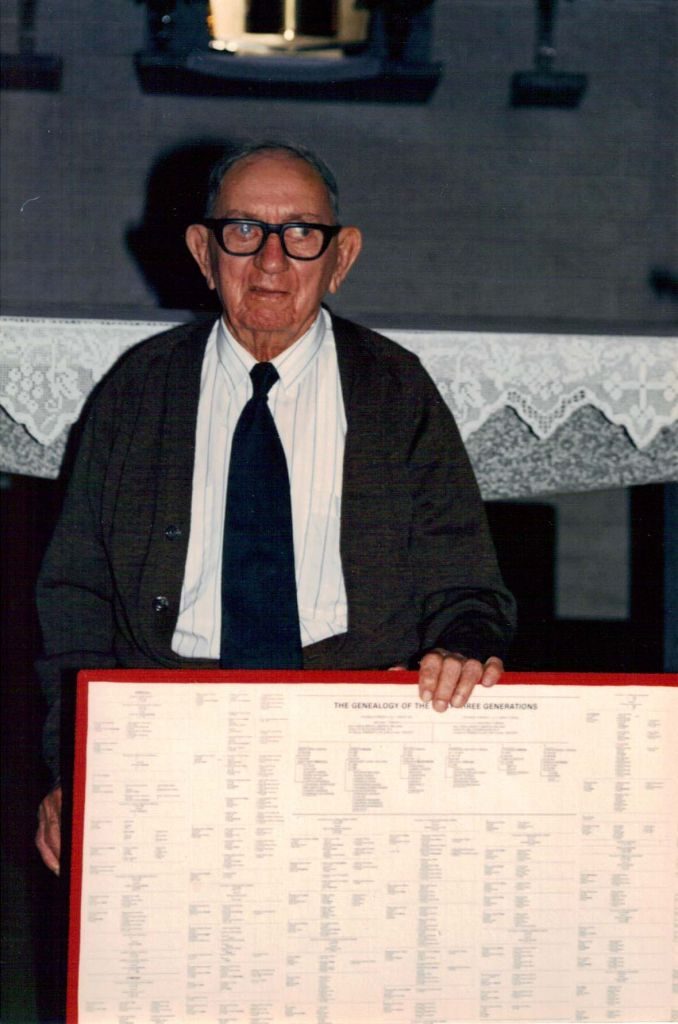
Tom with family tree at Pioneer Mass 15.8.1989. The above list started with a Mr Michael O’Brien who settled in Greenough in 1860. Evidently there is now over a thousand folk who have or have had the name O’Brien and are related to Michael!!.
Preface by Tony Critch
In the stories under PEOPLE on this website we have concentrated mainly on the very first settlers to the district of Tenindewa. In as much as Tom O’Brien was not one of those original settlers it is important to note he was resident there as early as 1913. [His first job at age of 12 was working with Arnold and Clarrie Meadowcroft with whom he lived in the Meadowcroft house just 1 km south east of where Tenindewa is today. [no cook or womenfolk they just “batched”] . His main duties were checking the stock water and caring for all cattle that in fact were his fathers.
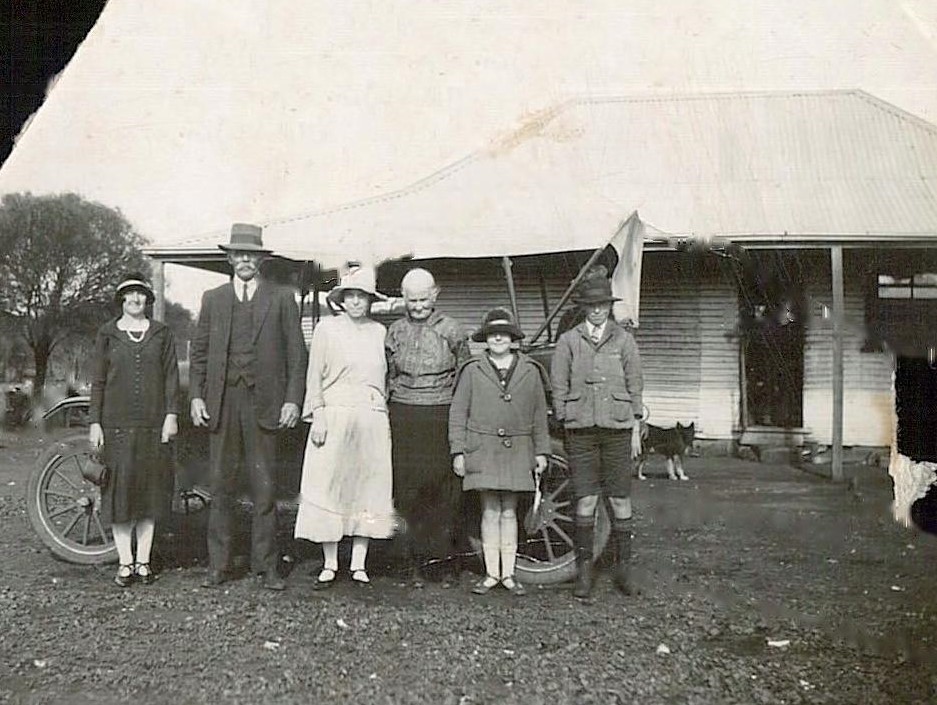
Sandy Butler and others outside the home that was the Meadowcrofts at Tenindewa
Doreen Lindsey (Butler) in the beginning of her book on Tenindewa “To Sow The Barley” (1988) acknowledges Tom with the following paragraph:
“This is the history of Tenindewa from the memory of Tom O’Brien who came in 1913 to work for the Meadowcrofts and later take up land himself. Without him I would not have been able to write this book”.
(This book is on this website under HISTORY)
Later to this David Meadowcoft did a series of “tapes” (Sept 1989) as they were know then and some featuring Tom. They are a wonderful record of what transpired in the early part of white settlement in the Mullewa area. (These are available in disc form from the Geraldton Library) They, the tapes/discs, are also a comprehensive accumulation of facts and figures regarding many of the early settlers and especially the O’Brien family. They are a wonderful adjunct to the following story and you will note the insertions identified by [–] as you read through. Also many would be familiar with the beautifully illustrated history about the O’Briens which was researched and compiled by Karen Rowe (Maisey) titled “An Irish Blessing” and this story on Tom too has been influenced by Karen. Many of the photographs below appear in in that book also.
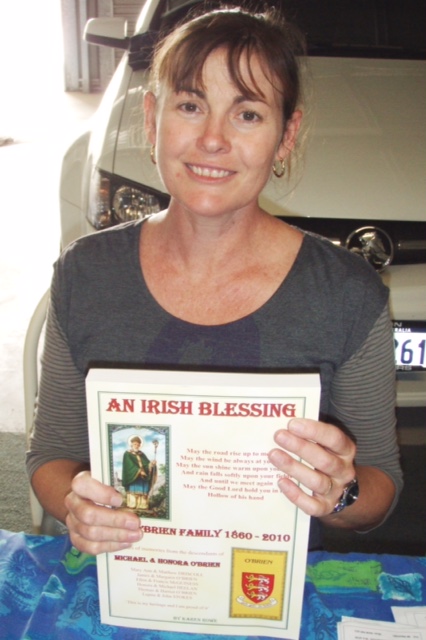
Karen Rowe
One of the interesting discoveries that falls out of these tapes and Tom’s memory is the history of one of the first steam engines that came to Mullewa. In fact it came to Tenindewa in about 1904 and was imported by Norman Fry and then sold to Petroff and then to the O’Briens. All pretty everyday information but what makes this particular story so interesting is that this machine [which past its use by date in 1928] then sat idle at Devils Creek for many, many years and was eventually discovered by a group of steam enthusiasts, restored and now is owned by the Royal Ag Society and can be seen operating, at least, at the Royal Show and on an annual basis in its original glory. (Fry and Petroff’s stories are both on this website under PEOPLE) [Clearly Tom had done his apprenticeship some years before they actually purchased the machine. He speaks of keeping the wood up to Peter Fry and learning the ropes on the maintenance and operation etc. Peter Fry was always the operator for the Fry family who lived and farmed right next to where Tom and the Meadowcrofts resided in those early days. Peter was Norman Fry’s eldest son. Tom tells us how they moved the machine in his own special speak. Seemingly and surprisingly they used just one draft mare to shift the machine in the yard. “She would go into it” he says and she was “always hot to trot” are the words Tom uses to explain this amazing feat by this amazing mare. The steam engine weighed 5 tonne filled with water and it took 5 horses to shift it from farm to farm.]
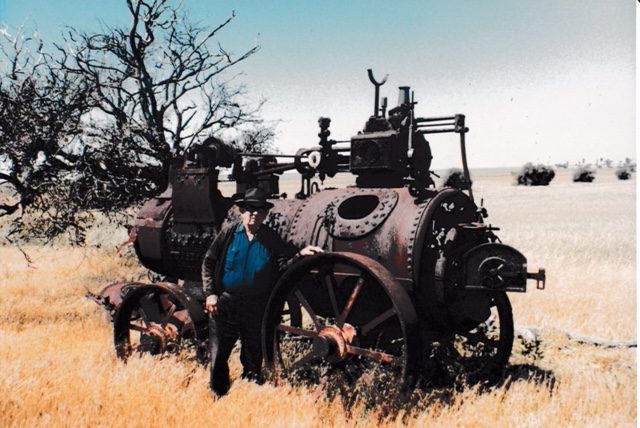
Tom O’Brien at the old steam engine. Taken by David Meadowcroft c. 1970.

Tom O’Brien at Kojarena (note the date plate on his right)
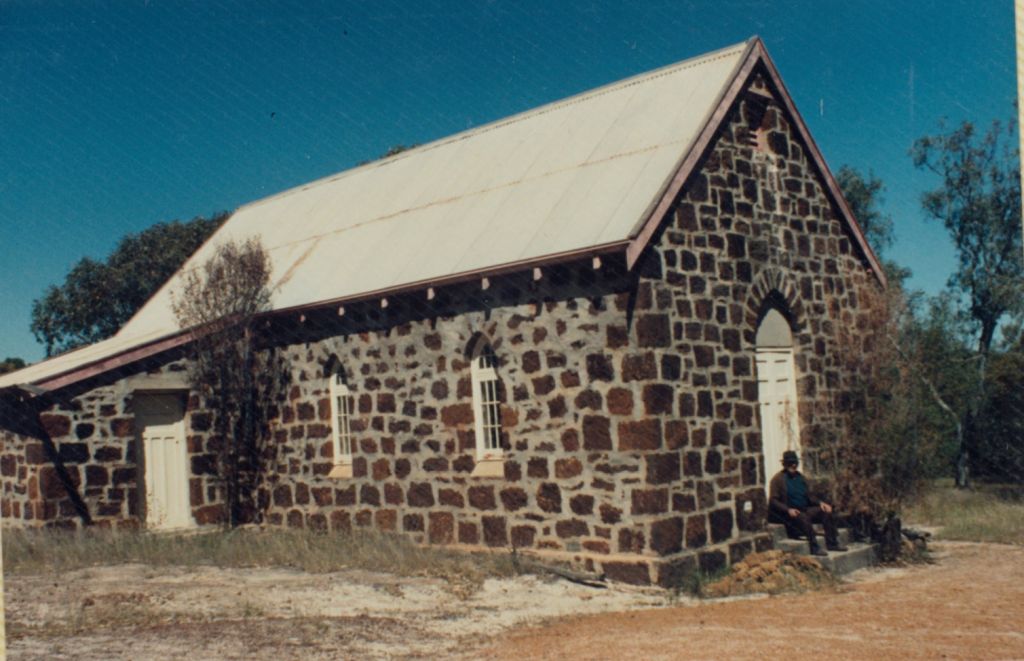
Tom at St James Chapel
Karen Begins:
Margaret, Thomas’s mother gave birth to Thomas on the 4th of January 1901 at home on the familiy farm in Kojarena. He was delivered by Mrs Lily Keeffe, wife of John Joseph Keeffe. This John was that “missing link” in the Keeffe Family’s heritage story. This same John Joseph was that “miraculous son”, born (Aug 1861) of Captain John Keefe and Catherine Keefe (nee Sheey).
Captain John Keefe’s demise (June 1861) came about after he deliberately beached his boat “The Preston” in a desperate attempt to save it in bad weather. John Keefe tragically perished during the attempt to walk back to Fremantle to fetch assistance. Later, Catherine also met a most unfortunate end (1880) when she became lost in that Kojarena area some years after Captain John’s death (See at the conclusion a brief story on this extraordinary Catherine)
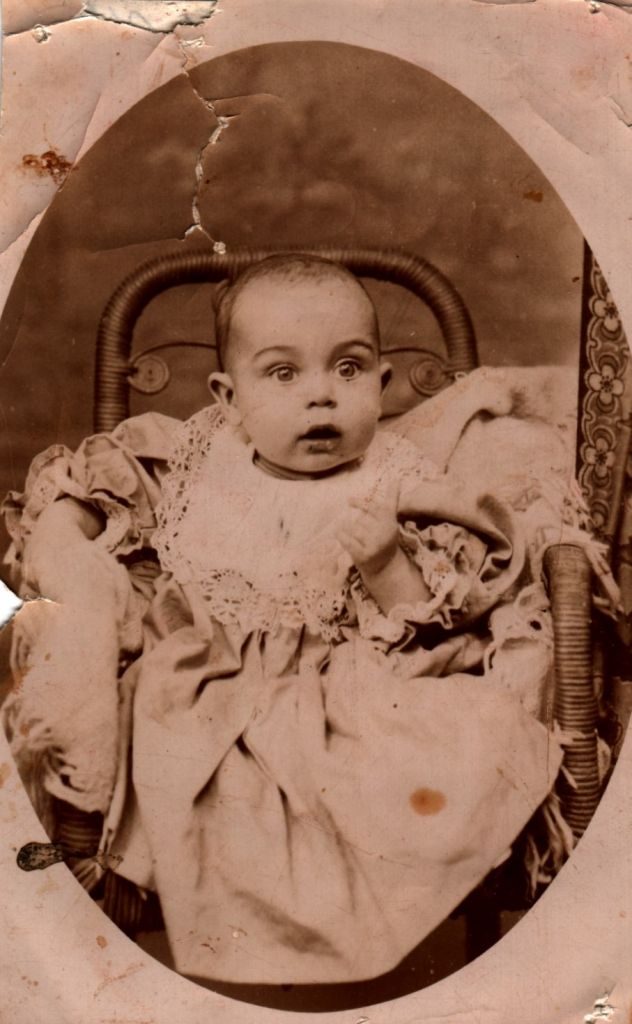
A bright eyed Tom O’Brien in about 1902/03
Tom O’Brien passed away on the 23rd of January 1995 at Nazareth House and is buried at the Utakarra Cemetery in Geraldton.
On the 31st of October 1928 at St. Peters Catholic Church in Greenough Tom married Irene May CULLOTON, the daughter of Michael James and Helena (McAuliffe) Culloton. (Another Church that Hawes had a hand in)
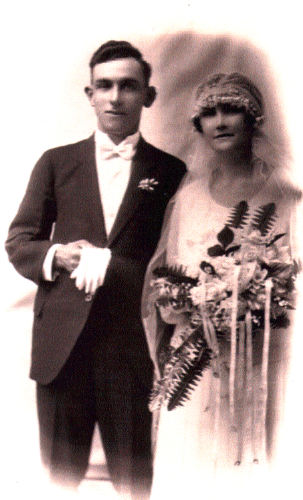
Prior to Toms marriage to Irene (better known as May) the best insight that we have of his early life is documented in the great book written by the late James H Wells, Here-There-Not-Everywhere. James (better known as Jim) had a great association with the O’Brien family. Jim was the son of George Well”s a Ganger in the railway at Bringo and went to the school there which was (for some reason) named Kojarena School (even though it was actually built at Bringo) The remnants of Bringo town can be still seen on the south side of the Geraldton/Mt Magnet Road about 3 kms west of Kojarina. There is still a track which deviates from the highway and tracks along the railway line for a couple of kilometres that leads you through the old townsite.
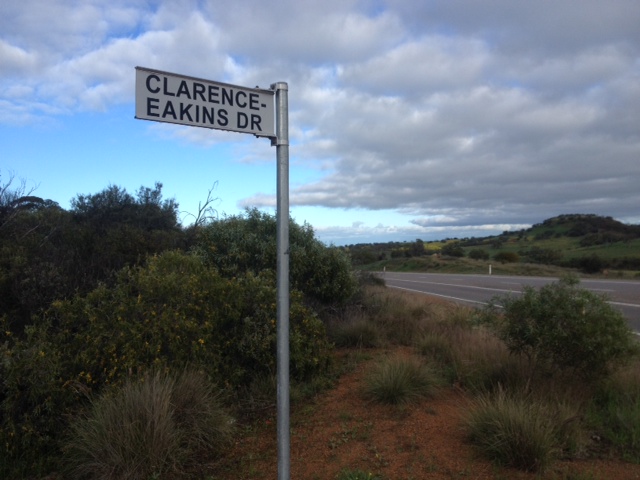
Look for this sign at either end of the deviation road
Jim’s sister Dolly married Brendy CULLOTON who happened to be May’s youngest brother.
When Tom O’Brien took up a 5000 acre virgin block 3 miles south east of Tenindewa [1928] he asked Jim if he would work for him. Tom would go back to Tibradden to crutch sheep and Jim would look after the property. They lived in a tent and built a bough shed (from ti-tree bushes) nearby. It had a corrugated iron roof to keep them dry and a cornsack with a steel weight in the bottom which served as a door. Tom also had a milking cow and a very faithful sheep dog called ‘Mac” [The farm at Tenindewa was previously owned by a Mr Tom Cooper]
Tom was planning to marry May CULLOTON and had a cement brick house built ready for his new bride.
In August 1928 before Tom married he went to Yoothapina Station (owned by Reg PERCY) which was 5 miles out of Meekatharra to shear sheep with Jack McDonnell. The Percy’s owned Tibradden at that time as well but was sold to the famous Atkin’s brothers of Mt Narrier and Murgo Station fame soon after.
Tom was blessed with a very special gift of Water-divining. Water-divining is also known as dowsing or water witching. Tom used a piece of fencing wire that he moulded into a Y-shaped rod to locate water underground so that a well could be dug.
Tom would walk over the ground with his divining rod firmly gripped on the two forks and bent outward .The stem would move up and down, a slight relaxation would make the rod point down and when this happened the stem was believed to be pointing at a source of water
Tom found water for many people in the district over the years and kept a record of the divining that he had completed .Tom being the kind man that he was never charged for his services divining but some kindly people did give a donation or gift . I would say that helping other people would have been payment enough for Tom.
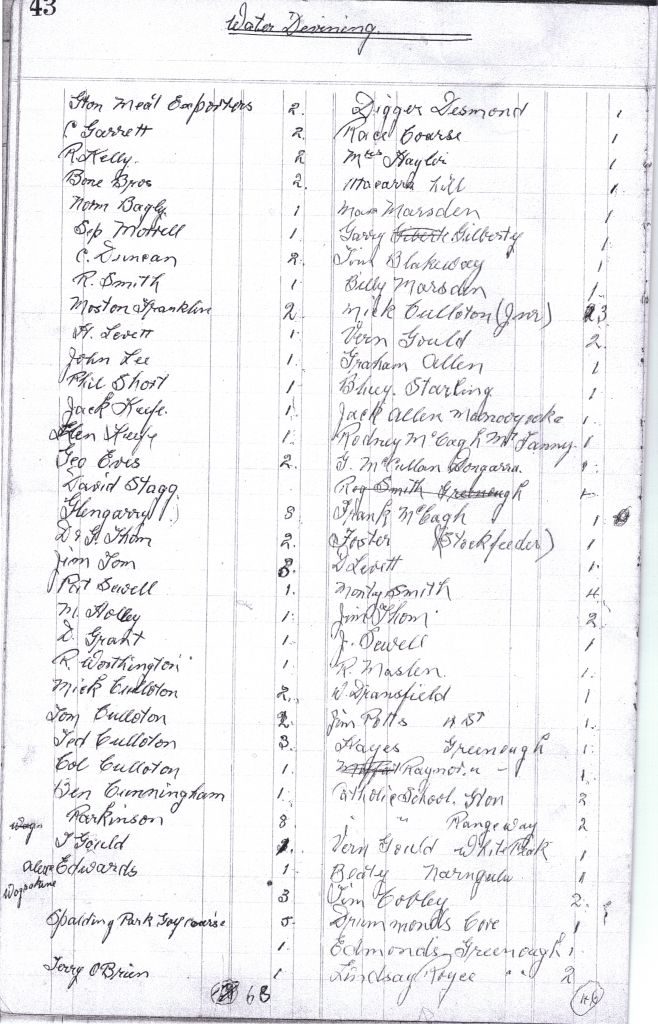
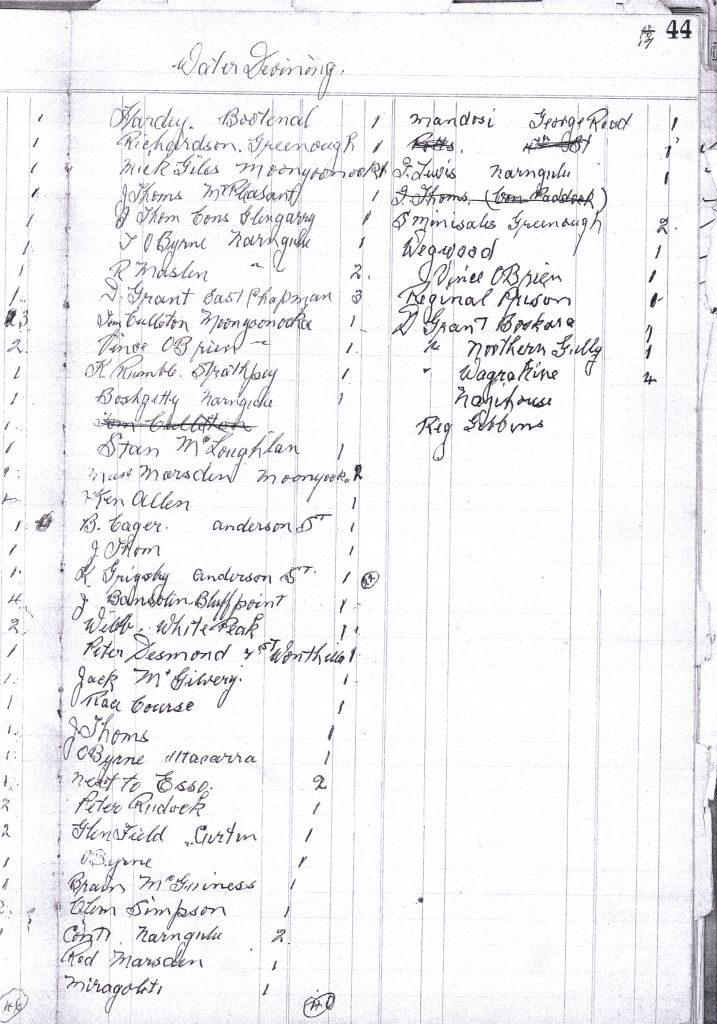
These two pages are the record that Tom kept of the Water divining he conducted in the district over the years Unfortunately he hasn’t added dates.
BY FATHER MICHAEL MORRISSEY
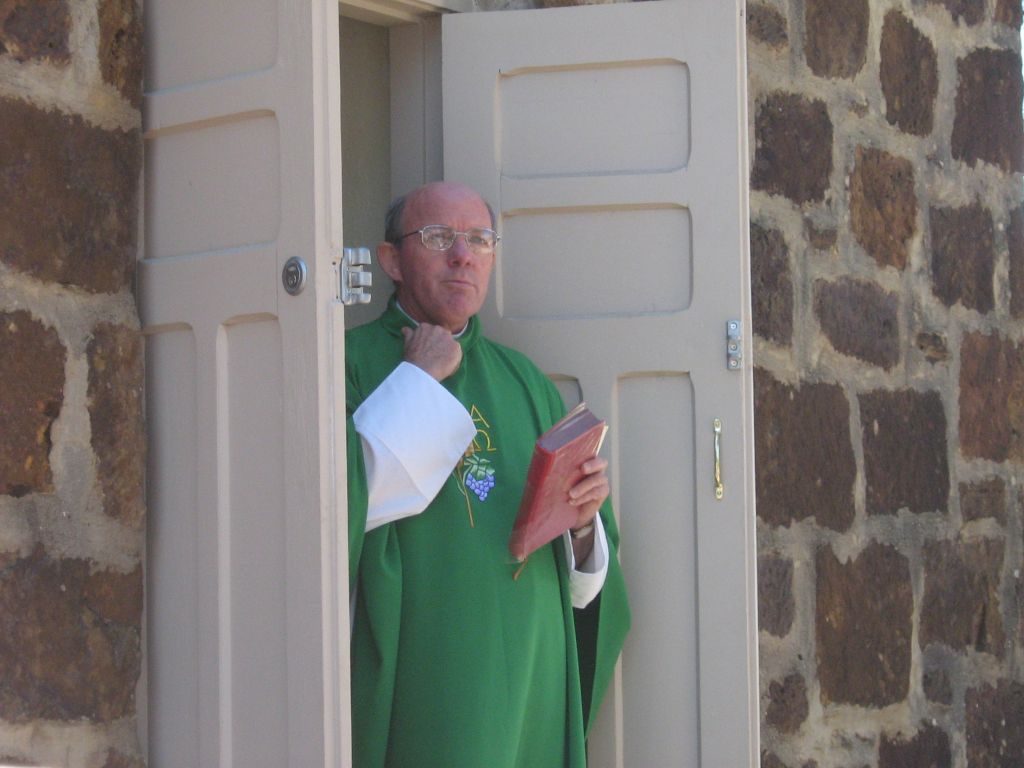
Father Michael Morrissey at the Kojerena Chapel (Later to become Bishop Morrissey)
I had the privilege to celebrate the Funeral Mass for Tom O’Brien in St Francis Xavier Cathedral Geraldton. Tom was in his nineties when he died peacefully .
The Cathedral was full to overflowing for his funeral .The simple question I asked was why. Tom was not rich or famous in material terms but was rich in many other ways. Tom loved his family and friends, they were so important in his life. Tom held no regrets for his life or how things happened and enjoyed all aspects of life and gave that desire to his children. Tom had great faith in God’s goodness and that was reflected in how he lived life .
Tom was one of those people even in his later years that you went away from, feeling a better person from being with him. I think that was why the Cathedral was full to give thanks for a wonderful life lived for others.
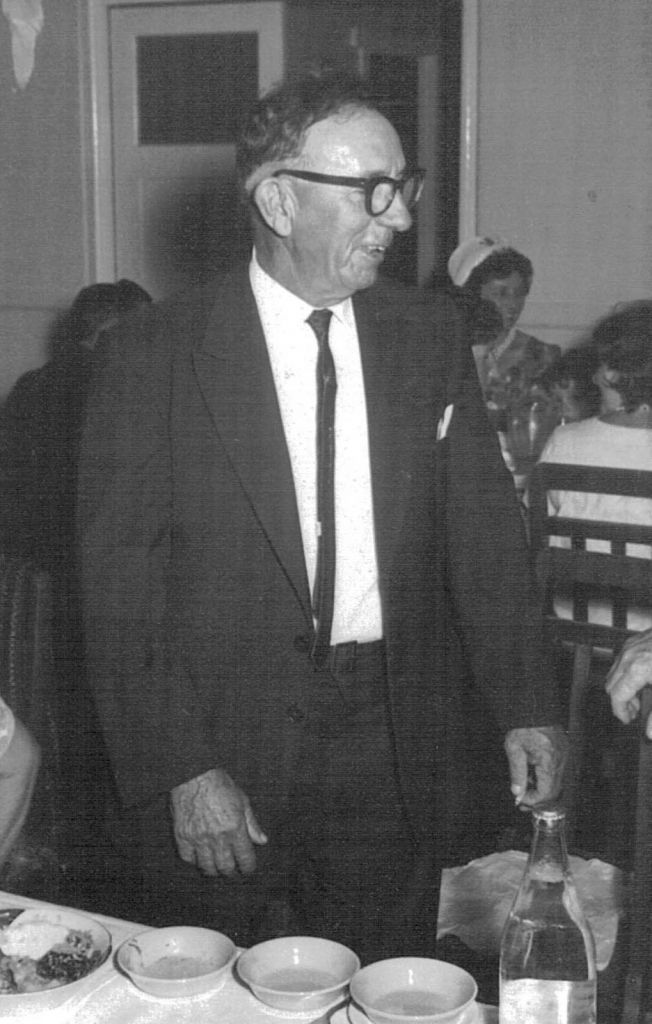
Tom giving a speech at a wedding.
THOMAS CHRISTOPHER O’BRIEN
By his daughter Mary Catherine (Kitty) Rowe
Dad did his schooling at Kojarena School, Bringo as did other members of the family. Dad finished School when he was 12 years old. [He was in the very first intake (1907) there and completed 9 years at that school]
Dad and Mum were married by Father O’Hare. Their bridesmaid was Helena mcCagh (Mum’s niece) and best man was Brendy Culloton (Mum’s brother).[Last day of October 1928]
In the early years Dad had a team of 6 horses that pulled the plough to sow the wheat. They were very big strong horses called draft horses. Their names were Robin, Mack, Chummy, Lila, Banjo and Sailor.
In later years Dad had a caterpillar tractor which was used for many things including scrub rolling. Dad also had a shearing team and they did shearing all over the district. [The first paddock cleared in 1928 was 154 acres (62 hectares) It was a financial loss in that year with wheat at “5 bob a bag” ($5.00 per tonne) “Bags were “half a crown” (25 cents) and superphosphate was 3 pound and 12 shillings a tonne. ($7.20)]
Dad had quite a large flock of sheep at the Tenindewa farm. He also had milking cows, riding ponies and always had sheep dogs (kelpies and collie dogs). Dad trained them well. One dog in particular whose name was “Biddy”, as soon as she saw Dad with the butcher’s knife and emery stone would run off and round the sheep up and bring them into the yard for Dad to catch one to kill.
The dogs only had one Master and that was Dad. They didn’t work too well for anyone else.
The Depression was a hard time for Mum and Dad but they managed to get through that.
Dad had quite a few men work on the farm over the years but Paddy Criddle and Alf Hollaway were the two that worked for him the longest. Initially his brothers Jo and Frank assisted at Tenindewa, Mick Wells came out to the farm at weekends to cut fence posts. He would ride his bike out the 3 miles from Tenindewa. On week days Mick worked on the Railway gang at Tenindewa. [in the tapes Tom speaks fondly of a “chinaman” that worked with the family for years. His name was Chin Yin but this was later anglicized to Charlie Young. Charlie/Chin “took crook” while he was at the Tenindewa farm and he was dispatched to Geraldton by train for medical attention. Unfortunately he died the next day]
The family car was a Chrysler with no glass windows just covers that were studded on to the car. It also had running boards that were used to put your luggage on and the dog also sat there. There wasn’t much room for the 4 kids, we were squashed in the back seat. There were plenty of complaints but that’s how it was as there were no station wagons or small vans in those times. Dad did buy a more modern car a little later on; it had windows you could wind up and down.
The house Dad had built was 3 large rooms with a veranda all the way round. As the kids arrived he would close part of the veranda in to make another room. [It was built of cement brick and the cost was 460 pounds ($920)]
Mum was very ill when baby number 5 arrived (Leslie Michael James). She had a stone in the kidney so Doctor Hobbs from Mullewa and Doctor McAleer from Geraldton had to operate on the kidney to remove the stone. It took Mum a long time to recover so she had to have some help with the children. Betty Bisby (Desmond) and Avis Stokes (Franklin) came to the farm to work.
Mum didn’t have any more trouble with her damaged kidney until 1961 when she had to have it removed. She lived quite a healthy life with only one kidney.
Dad didn’t have much time to play sport. We can’t really remember him doing anything other than work. He did enjoy a beer, the news and country hour on the wireless.
There was only one wireless in our home. We all had our favorite programs, Dad with the news and country hour, Colin with sport and the rest of us with Hagan’s Circus. We all enjoyed the Jack Davy Show and the Saturday night request show. I think Mum missed out all round but I guess while we were listening to the wireless she had a bit of peace.
While the news was on there had to be complete silence when Dad said quiet he really meant it so if you saw him put his hand up to his trouser belt you knew he meant business.
We can remember Dad had a great remedy for tooth ache, he would put tobacco into the hole in your tooth. If you were ill and it didn’t matter if it was a cold, tummy ache or a sore foot he’d mix Brandy, hot water and a little sugar and that fixed everything.
Mum gave us a spoonful of “bidomack”, a vitamin mixture, quite often. I can still taste it. It was rich in iron and I think it may have decayed all our teeth as we were all wearing dentures at an early age. We all take note of what the advertisements tell us.
Dad also had many successes with water divining. Among his successes were Nazareth House, St. John’s School, Rangeway, St. Francis Xavier Primary School, Geraldton Golf Club and Geraldton Turf Club.
Dad was great mates with his cousin Dave Heelan who had a property north of Tenindewa. In the early days Dave would come to our farm on weekends. He was a bachelor so he enjoyed a bit of company. (see Albert Creams story under PEOPLE on this site)
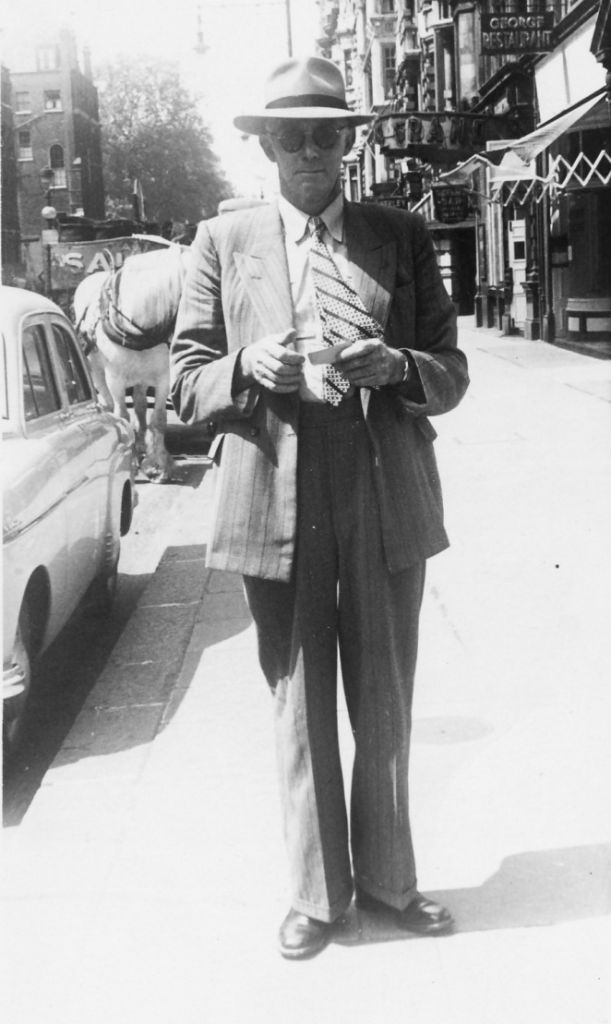
Dave in the mid 50s in Perth
Dad and Mum sold the Tenindewa property in 1952 [To Les Stokes of Nabawa] then bought the Kojarena property but in the late 1960’s they moved to Arrino to do share farming at “Woopenatty” the McAleer property. Because of the heavy winter rain they were unable to put in a crop for 2 years so Colin had to find other employment and Dad stayed on at “Woopenatty” (Arrino) for some time.
In the early 1970’s Mum and Dad retired to Geraldton and moved in to a Unit in Fitzgerald Street.
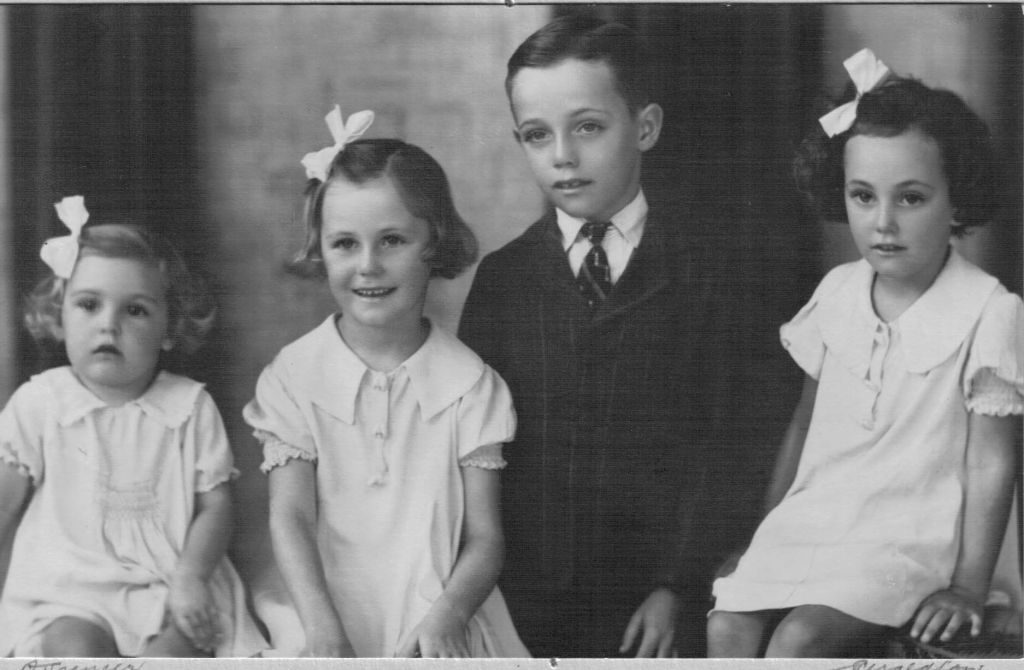
Brenda , Kitty, Col & Glenis
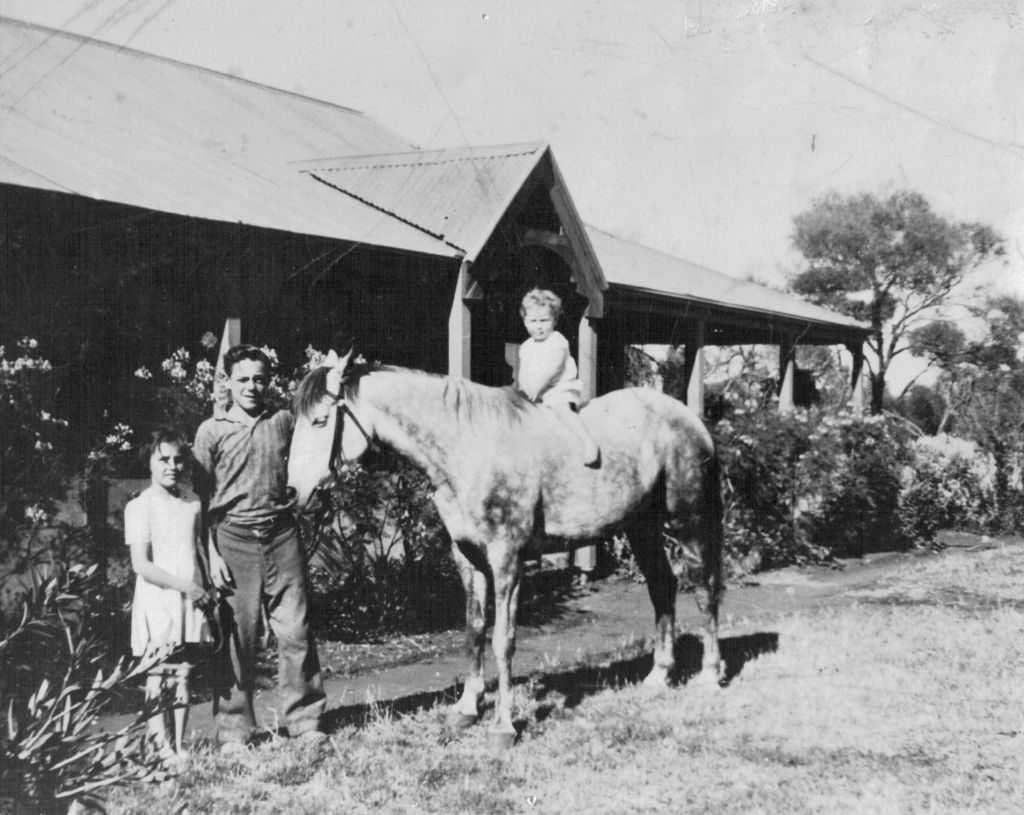
Brenda, Col & Bonnie on Bluey the horse. This house still stands and is currently the home of Glen and Sam Ward and daughters Sally, Matilda and Amelia . (Critch’s property 2017)

The Old Home in 2017
MEMORIES OF COLIN THOMAS O’BRIEN
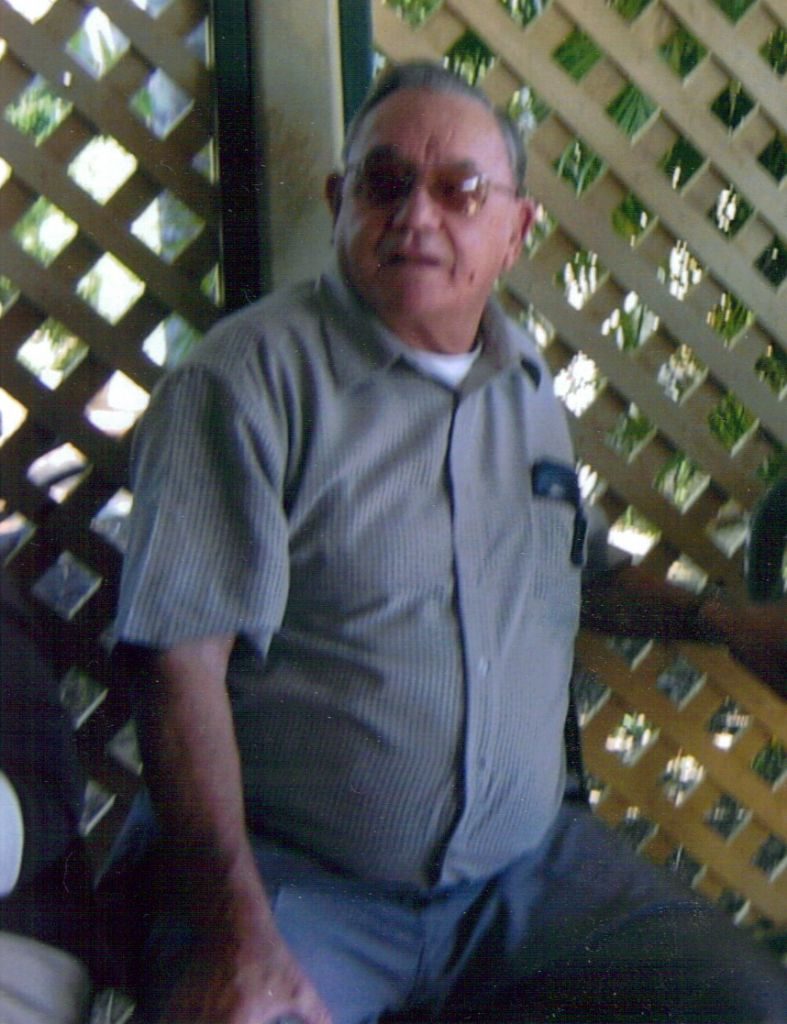
Colin O’Brien, Tom’s son.
I was born on the 16th December, 1931 at the Geraldton Maternity Home, Marine Terrace, Geraldton. Dad and Mum had a farm at Tenindewa. My first memories were from about 1935. I went everywhere with Dad, it gave Mum a bit of a break as she had Kitty to look after Kitty was about a year old then.
We had Mass said at our home about once a month. Father Byrnes was the Parish Priest at Mullewa. By 1938 Dad and Mum had four of us Col, Kitty, Glenis and Brenda. Dad got a better car, a 1928 Chrysler. We then travelled to Tenindewa Hall, Devil’s Creek Hall and Our Lady of Mt. Carmel, Mullewa for Mass every Sunday. I became an Altar Boy for Dean Lynch in 1946.
I started School in 1938 at Tenindewa Government School. I stayed at Mr & Mrs Weir’s home in Tenindewa. I walked to the School with Zora Weir for three days, then the School closed down. The Government couldn’t afford to run it as it was in the middle of the Depression. I then went to Devil’s Creek School for a week and then the bus started taking us to the Mullewa Convent in 1939. I stayed at the Convent until 1945.

Tenindewa School 1930. There is a now replica building on the exact site (erected 2015)
Dad and Mum had booked me into the Christian Brother’s College in Geraldton for 3 years so that I could get my Junior Certificate. I only stayed one year. I reckoned I had enough. I was fourteen years old by then and it was 1946.
I would ride my horse “Bluey” to tennis at Tenindewa and also to cricket and football at Devil’s Creek. I played 108 games for Devil’s Creek Football Club, 110 games for Towns Football Club, Geraldton and 25 games for Three Springs Football Club. I would ride “Bluey” to Tenindewa to catch a ride with Bill Cox to Mullewa dances and to the pictures.
When I was 18 I got my driver’s licence in a 1938 Ford car. In 1949 we got our first truck a Morris LC3, 18 c.w.t. Dad also bought a good second hand Chev off Preston’s from Moonyoonooka.
We had our best crop that year. We grew 2000 bags of wheat. Dad and I harvested it in the heat of the day. On a cool morning I would cart 20 bags (a load) to Tenindewa. Dad would check on the sheep and all watering points while I carted 5 loads to the Tenindewa Wheat Bin.
I loaded the truck by myself with a Treleor Bag Loader which was pumped up with air to the weight of the operator so when you lifted a bag of wheat (open top bags) up on to the truck you could stand on it to go down for the next bag.
The next year Dad and Mum put the farm on the market for 8000 pounds. It wouldn’t sell. Mr. Moore our next door neighbour said to put 12000 pounds on it. It sold straight away.
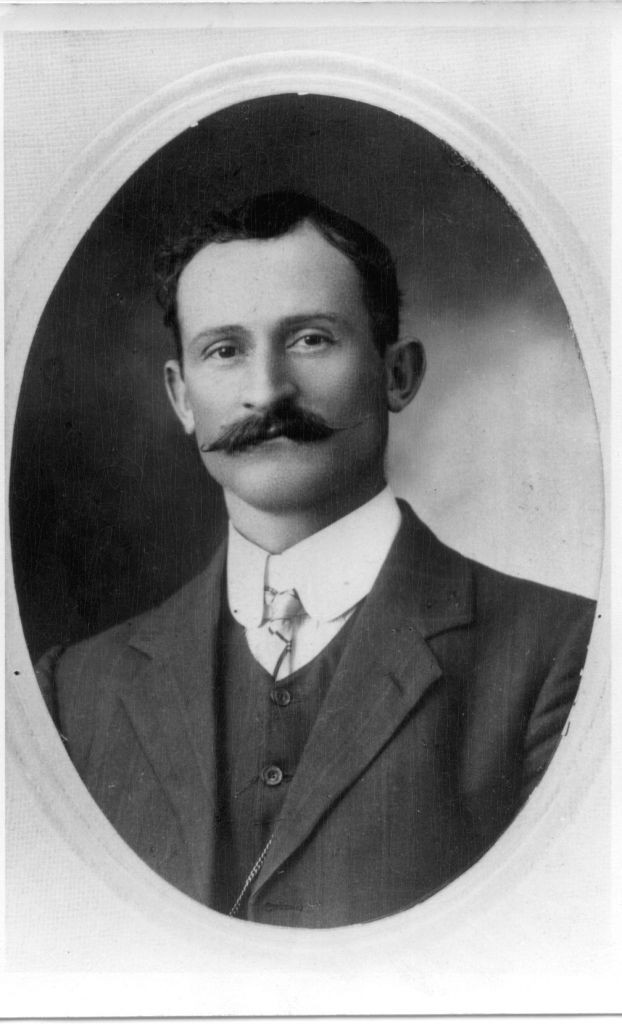
Hon Tom Moore MLC
In 1952 we went to Kojarena and sowed a small amount of wheat, although it was mainly sheep country. We did contract seeding and harvesting and also scrub rolling for E.V. Sewell, R.V. Sewell and also for Atkins brothers at Tibradden Station.
Dad, Glenis and I stayed at the Kojarena homestead. Grandma and Grandfather were also there. Grandfather passed away in 1953.
Dad and Mum bought a house in Geraldton at 59 Cathedral Avenue where Mum. Kitty, Brenda, Les and Bonnie (Beverly) lived. Kitty was working, Brenda and Les went to School and Bonnie was not old enough.
I met a very nice young lady at the Yacht Club Dance Hall in 1953 her name was Freda Kupsch. We got married by Father Paul Fitzgerald on 7th January, 1956 at St Francis Xavier Cathedral, Geraldton. Our wedding Reception was at the Queen’s Hotel owned by Marsden’s Pty.Ltd. We went to Perth for our honeymoon and we stayed at the Rex Hotel in Hay Street.
We lived at Kojarena for a while. We shifted around a bit with my work, Mullewa, Geraldton and Three Springs areas. We had 7 children. Five boys and 2 girls. They were all born at St. John of God Hospital, Geraldton. We had our first 4 children Gary, Ross, Susan and Debra in 4 years. The nun’s at St. John’s would say, see you next year Freda and Col. The children were born in 1957, 1958, 1959, 1961, 1964, 1965 and 1972.
Freda has done a great job!
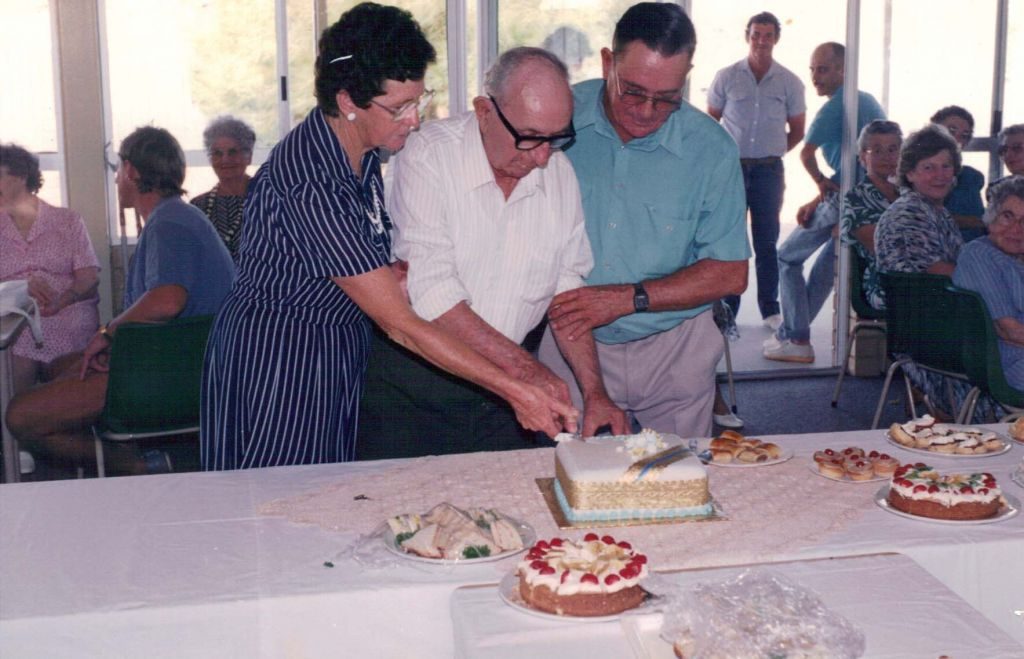
Kitty and Col helping Tom with the cake on his 90th birthday.
-
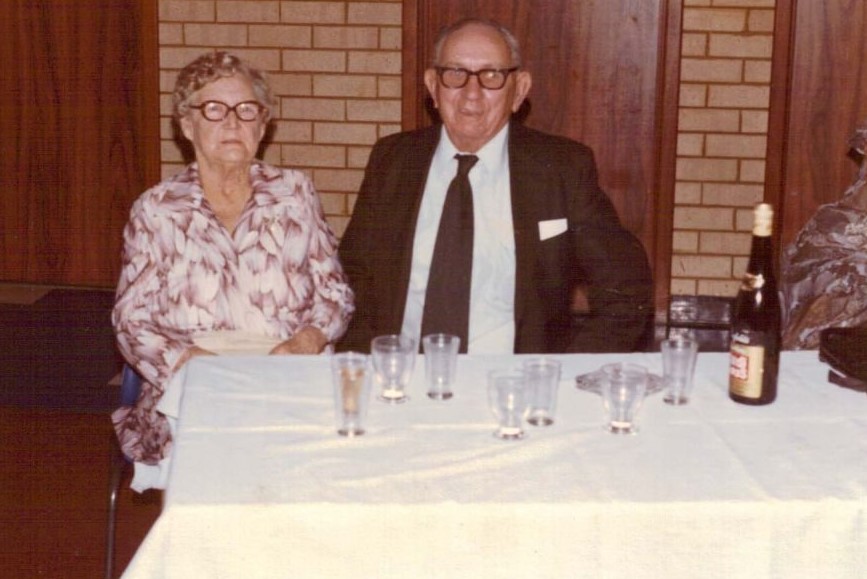
May and Tom (1991)
Kitty (O’Brien) Rowe
As I put pen to paper and think about my younger years I remember what a good life, I really did have good parents with a strong Catholic faith and a safe and secure home. We didn’t have a lot of money but were well fed and looked after.
Mum was always with us. I can recall dad going in to the Tenindewa Store for the mail and groceries and he would always come home with cool drinks and lollies for us kids
Dad had to go away for work when he wasn’t busy on the farm. He would go shearing and scrub rolling. I guess that’s how he managed to keep the Bank Manager from the door. While Dad was away Mum would look after the farm and animals. Mum always had a good back up with our lovely Auntie Ruby and Uncle Charlie Keeffe who lived in the next property. They were always there for us
I can’t really remember many toys or dolls except a rag doll dressed as a nurse and a cupid celluloid doll on a stick that we would get on Show Day. We did seem to make our own fun building bush cubbies and making hiding places in the tall marshmallow plants, which grew well at the Tenindewa farm. We had lots of fun when the creek came down (at the back of the house) every winter. When the rain came down we played in the mud and got our clothes in a mess and we thought Mum wouldn’t notice , but of course she did, so we really copped it
Poor Mum I can still see her scrubbing clothes and using the copper to boil them. It would take her 2 or 3 days to do the family wash and she was very fussy with the washing. I can remember one washing day all the washing was on the clothes line and the wire broke and down came all the washing onto the red Tenindewa sand,no lawn under the clothesline way back then. Poor Mum had to start all over again. Gosh, they had it tough!
We had our jobs to do like bringing the wood and chips in to keep the stove going and copper boiling for our baths and do the separating of the cows’ milk. We had a machine with a big bowl on the top, which held the milk, and we had to turn the handle, which separated the cream from the milk. Mum made butter from the cream.
Water was in short supply although we had 2 very big rain water tanks. We had to take great care of what we had as it had to last from one winter until the next. So that meant we all used the same bath water, girls first then the boys. We would tell the boys we did a wee in the bath, which always caused a stir and much laughter from us girls
I did my schooling at Our Lady of Mt. Carmel Convent, Mullewa. I was taught by the Presentation Sisters. We went to school by bus which was quite a long drive each day but we passed the time singing the latest Hit songs. Well, the girls did, the boys just gave us a hard time about our singing
We had a long walk from home to the bus stop, didn’t like that much. Sometimes it was so hot we would take a bottle of rainwater with us in the morning and put it in a shady spot so we could drink it on the walk home in the afternoon. But not being very bright, by the afternoon the bottle would be in the sun. Instead of cool water it was hot enough to make a cup of tea, but we live and learn!
The Mullewa bakery would send bread out to the farmers per the school bus. One time we ate the middle out of the bread on our walk home, it was delicious. Mum then had to make scones. We didn’t do that a second time.
We didn’t go to town a great deal in the early days except when the circus came to Mullewa and at Show time we always got a new dress for that. Mum would do the clothes shopping at Mr. Moorehead’s Drapery Shop. We also went to School concerts.
I do remember we always had a Christmas Tree at Tenindewa, it was held in the railway holding shed – there would be bags of super in one corner of the shed and the Christmas Tree in the other corner. Families would come from miles around, some families we would only see at the Christmas tree time every year. In later years the Christmas Tree was held in the Tenindewa Hall.
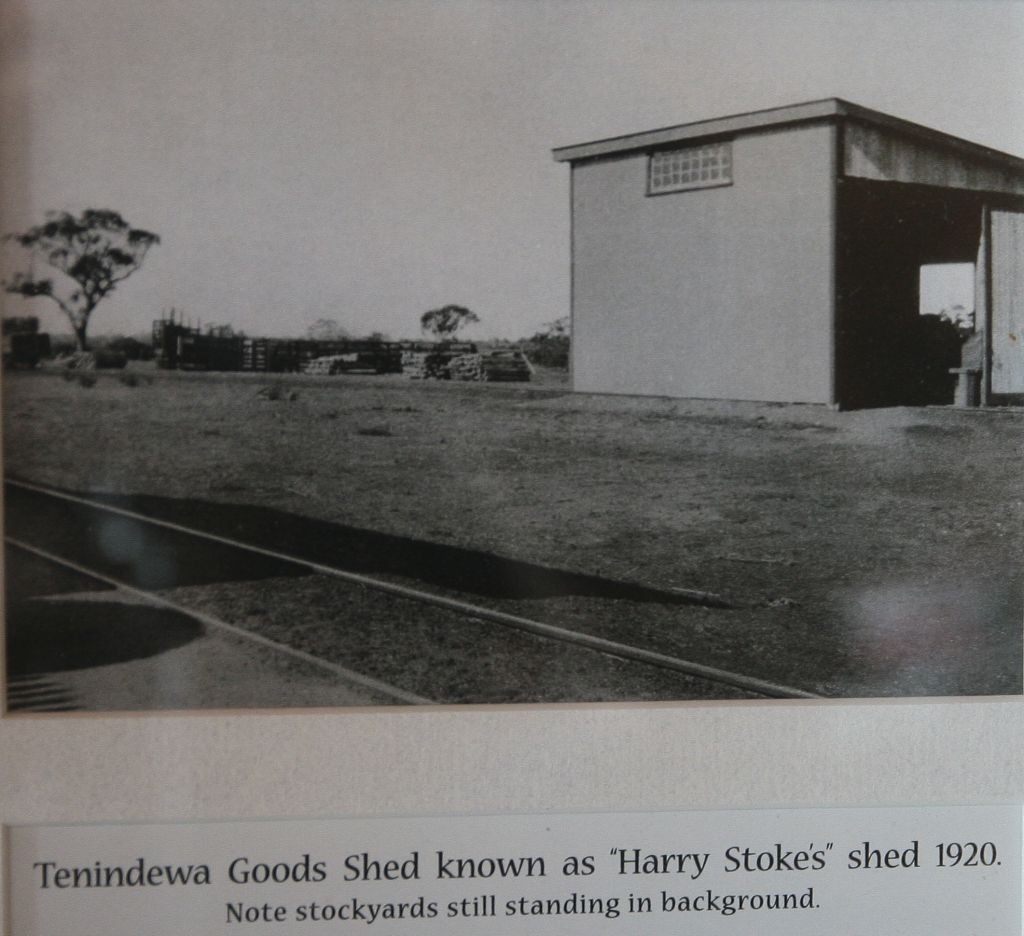
Tenindewa Goods Shed known as “Harry Stokes Shed”. Harry would store his superphosphate there much to the annoyance of the WAGR and others (WA Government Railways)
We would have Mass every so often Tenindewa. The families would take turns at having Mass said in their own homes until a Hall was built at Tenindewa.
When I made my communion and confirmation we went in Our Lady Mt. Carmel, Mullewa.
I do recall on Sunday’s we would visit uncle Paddy and Auntie Agg’s home or Uncle Frank and Auntie Margaret’s or Uncle Andy and Auntie Lena’s. I loved those outings. We had fun playing with all our cousins and of course they came to visit us.
We went to Kojarena to spend time with Grandma and Grandpa O’Brien. We had lots of fun helping Grandma with her many chores, which she repaid us with a cake of cashmere Bouquet soap; it had such a beautiful perfume.
On the way to Kojarena we would go through the sand plain country where beautiful wild shrubs grew. I would always ask ‘could we pick some flowers’ but the reply was always ‘we will stop on the way home’, but it was always dark on the way home. Guess it was one way to shut me up. I still love wildflowers, we go for a drive in the country every year in the wildflower season.
Another time I really enjoyed was our Christmas visit to Newmarracarra to visit Uncle Con and Auntie Kitty and family. We enjoyed our time with our oldest cousins, not sure how they put up with us because we stayed until the New Year.
I was named after my Auntie Kitty. It was Catherine really but that’s what they did in those days, changed Catherine to Kitty.
We did stay with Uncle Ted Culloton at Walkaway on some School holidays. I can’t really remember my Culloton Grandparents.
When I got older I worked weekends at the Tenindewa Store, which was owned by our Cousins, Nell and Tom Foster. When I finished School I worked with them full time. It was a very busy Shop and Post Office with many Railway people living and working there. There were also many farming families.
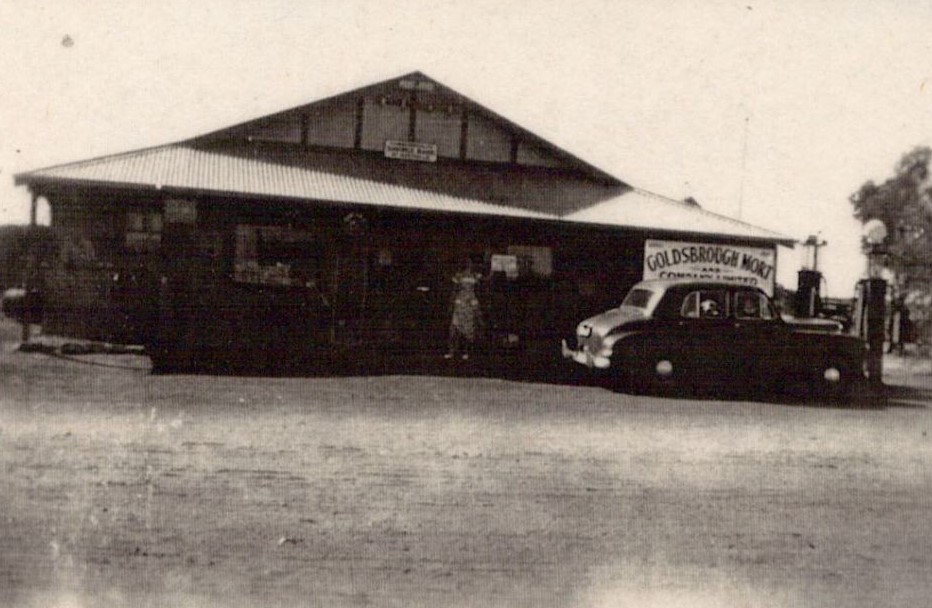
The delightful lady out front is Kitty (O’Brien) Rowe.
I played tennis at Tenindewa at the Tenindewa Tennis Club and hockey for Devil’s creek. I enjoyed my teenage years; there were always dances, Debutante Balls, Show balls and Junior farmers Balls also.
There were a great number of young people at Tenindewa and Mullewa. Mullewa was quite a large Centre in those days with many Railway workers living there.
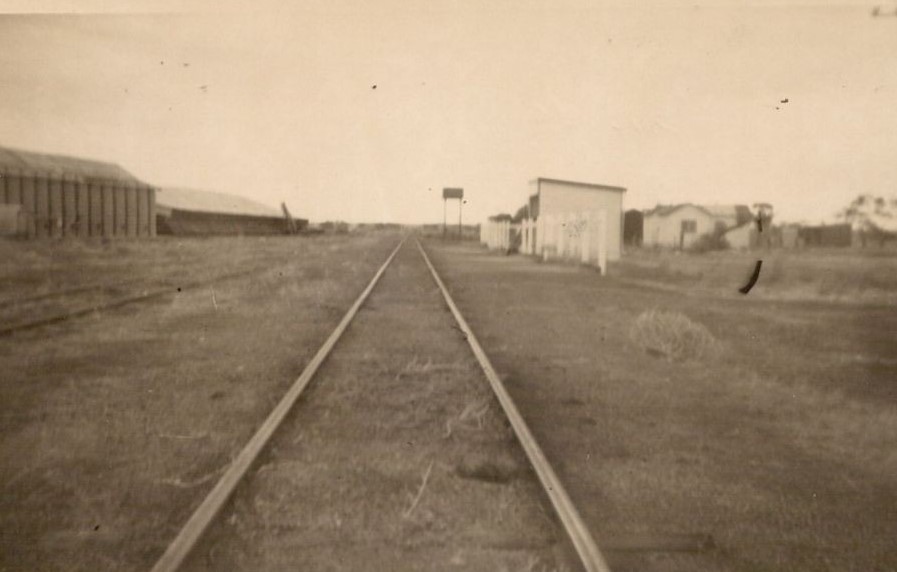
Tenindewa Siding (1950s)
In 1952 Mum and Dad sold the Tenindewa farm (Hurlmore) and bought the Kojarena property, which was owned by Uncle Terry O’Brien. They also bought a home in Cathedral Avenue, Geraldton where Mum lived as Brenda and Les were still at School and Beverly (Bonnie) had not started School.
Dad, Col and Glenis worked at Kojarena farm with Dad and Col farming and Glenis cooking and doing the housework.
I still worked at Tenindewa after the family left, but after a few months I missed my family so I made my way to Geraldton to be with them.
Nell Foster’s brother Clete Heelan owned a small shop at the West End of Geraldton close to the sea with holiday cottages close by where people from all over W.A came for their holidays. It was a wonderful beach for children. I was offered a job with him so I worked there for about 4 ½ years.
It was there I met my husband. He was a postman and I the girl behind the counter We got married at St. Francis Xavier Cathedral on the 4th August 1956 The reception was held at Birdwood House.
We had 3 children, Peter, Julie and Stephen. Sadly we experienced the loss of our precious son Peter to brain tumours at the age of 38. It is the hardest experience any parent has to go through. With our catholic faith, our other children and their partners and our grandchildren we got through the dark days. You never really get over the loss you just learn to live with that loss.
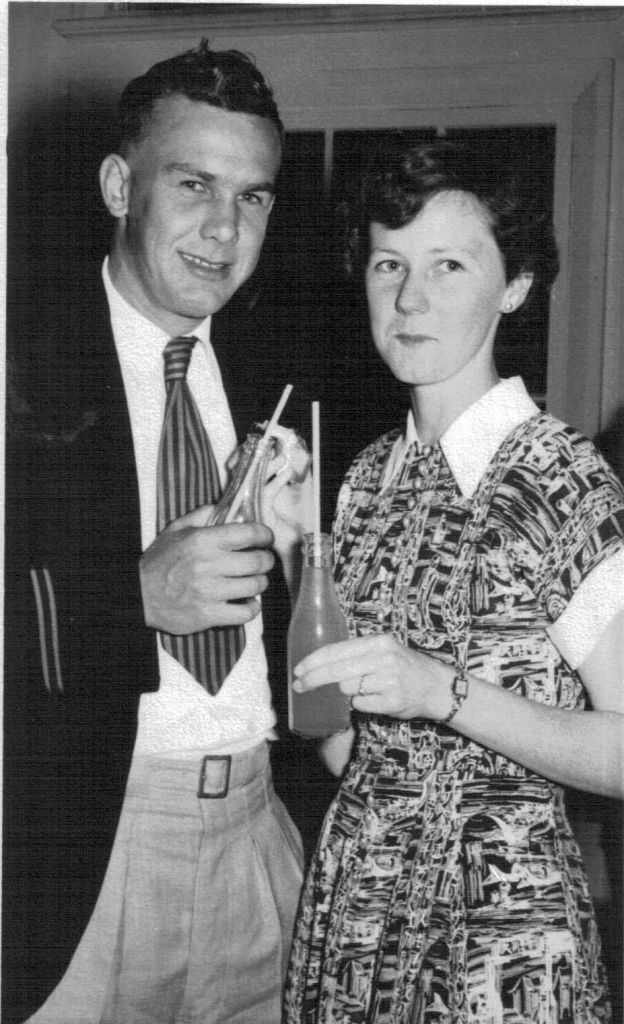
Les and Kitty when straws were the everyday accessory to drinking cool drinks
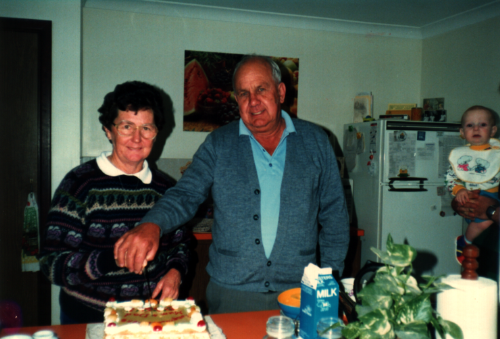
Kitty and Les celebrating a milestone
Acknowledgements
Well the story about Tom O’Brien is a little different to others in as much as Tom and his remarkable memory must at the outset be recognised and praised. For those that were close to him through his life his memory must have been a skill of constant amazement. Tom you made this very easy.
Karen Maisey Tom’s granddaughter-in-law has been the most wonderful collector and disseminator of the facts in the Michael O’Brien line. We thank her for being the rock on which we built this humble but colourful life story.
David Meadowcroft has done several tapes that are now discs with Mullewa folk. [Tom talks about the Meadowcrofts and how they are connected to the O’Brien’s, Keeffe’s and McGinnis. According to him they are all Irish and all related]. These discs will become more valuable as time goes by. (Remember they are available to buy or hire at the Geraldton Library)
Kerry Marriott (Bamford) is an ex Mullewa kid that left town at 12. (1961) Her heart and interest remains strongly in the area. Thank you Kerry for the interest and technical and literary skills that make this story presentable.
Footnote; Just in case you are wondering what they did with that steam engine [Tom draws our attention in the tapes to the fact that the machine (the steam engine) actually drove or powered another machine and that was a chaffcutter. It was still horse days and those animals need fuel and lots of it so chaff was a big part of the farming game. It also went far and wide and especially to the many sheep stations. Tom describes a 30 strong donkey team pulling a wagon full of chaff destined for a sheep stations many miles away.]

This is the same Steam Engine operating in a paddock in front of what is now Scott McGregor’s house. It is powering the chaffcutter on the left with the aide of a big flat drive belt.
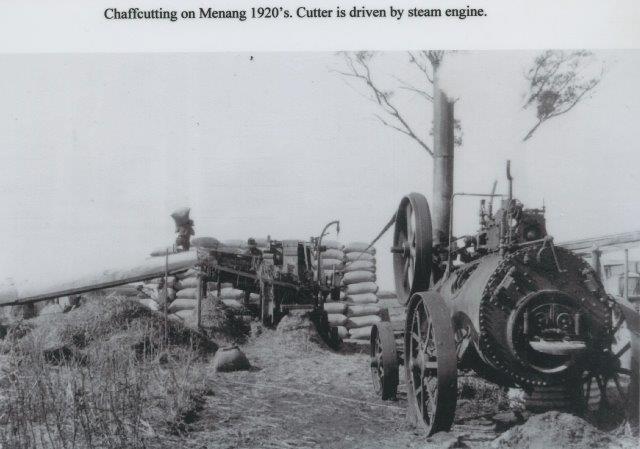
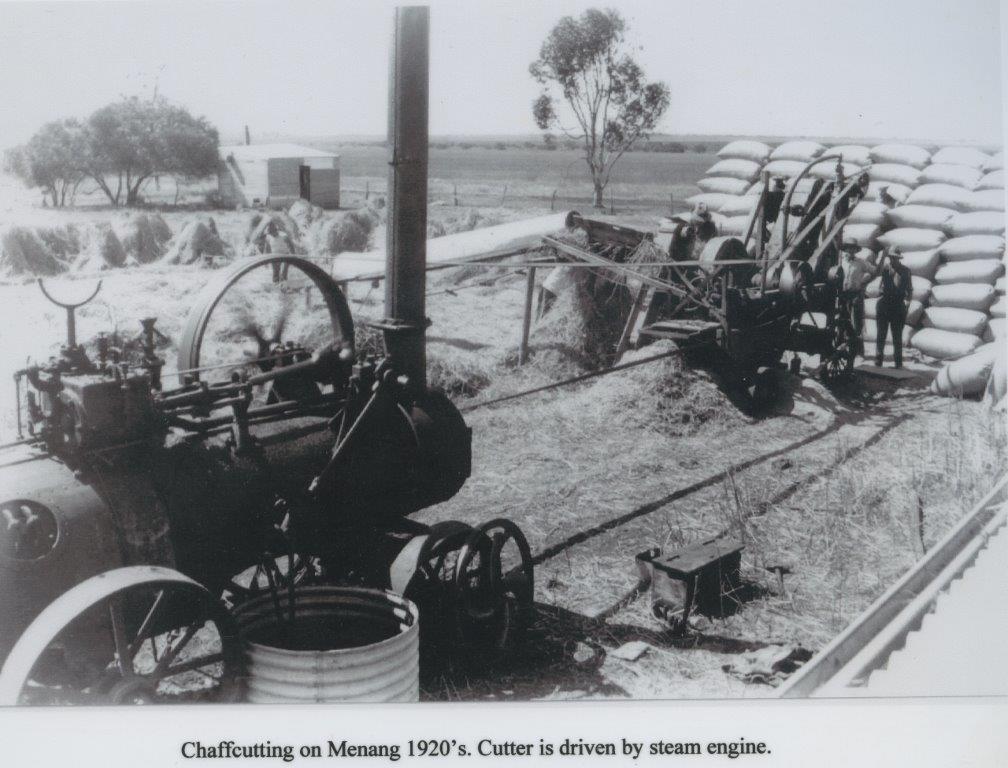
Catherine Sheey
Catherine Sheehy was born in Limerick Ireland to parents Terrence and Bridgette on the 7th of August 1836. At the tender age of just 18 years old Catherine embarked on the journey of her life aboard the ship Victory to Western Australia
The Victory left from the Port of Plymouth on the 28th day of December 1853 for the City of Perth, Western Australia, with 64 male, 103 female immigrants, 38 boys under 14 years, 31 girls under 14 years and 4 under one year, arriving in the Port of Fremantle on 24th March 1854, a journey which took 3 months.
Various household goods were among the imports, including 18 kegs, tobacco, 55 cases of beer, 10 cases of ale, and 30 cases gin. Starch, soda, blue, biscuits, herrings, the essential items of lifewere also among the cargo.
Little information is known of Catherine’s movements when she arrived in Western Australia.
The first official record available is when Catherine married widower, John Joseph Keeffe in Fremantle on the 27th of September 1860. John Keefe(sic) from county Clare in Ireland arrived in Port Adelaide in 1851. John was a grand mariner and was mentioned as Master of coastal vessels in the Inquirer newspaper
John Keefe(sic) was widowed on the 17th of January 1859 in Port Adelaide when his wife Margaret (Madge, nee Burke) passed away leaving two young daughters, Mary and Margaret Anne (Annie).The children were taken into care by the Sisters of Mercy in Fremantle.
The marriage between John and Catherine was unfortunately to be short lived when tragedy struck . John was the Master of the Preston when he encountered a severe winter storm, fearing the worst. John decided to beach the vessel at Mandurah near the Murray River, it was here the Preston met fate and began to break up.
On the 27th of June 1861 Captain John Keefe(sic) courageously decided to walk from the wreck site to Fremantle. It was on this walk John met his demise due to exposure to the elements.
This tragedy left Catherine widowed and seven months pregnant facing bringing up her child alone.
Their child John Joseph Keeffe was born in Fremantle on the 13th of August 1861. According to family folklore it is believed that after the untimely death of John Keefe(sic) Catherine made her way to Toodyay where she worked for the Parish Priest, then travelled to Geraldton to housekeep for the parish priest.It was here that Catherine met and on the 17th of August 1862, married ,Francisco Raphael Ventura, a Spanish stone cutter recruited to work at New Norcia as a lay brother.
The Ventura family settled on a farm on the Front Flats of Greenough and seven years later moved to the Back Flats in an area known now as Bootenal.
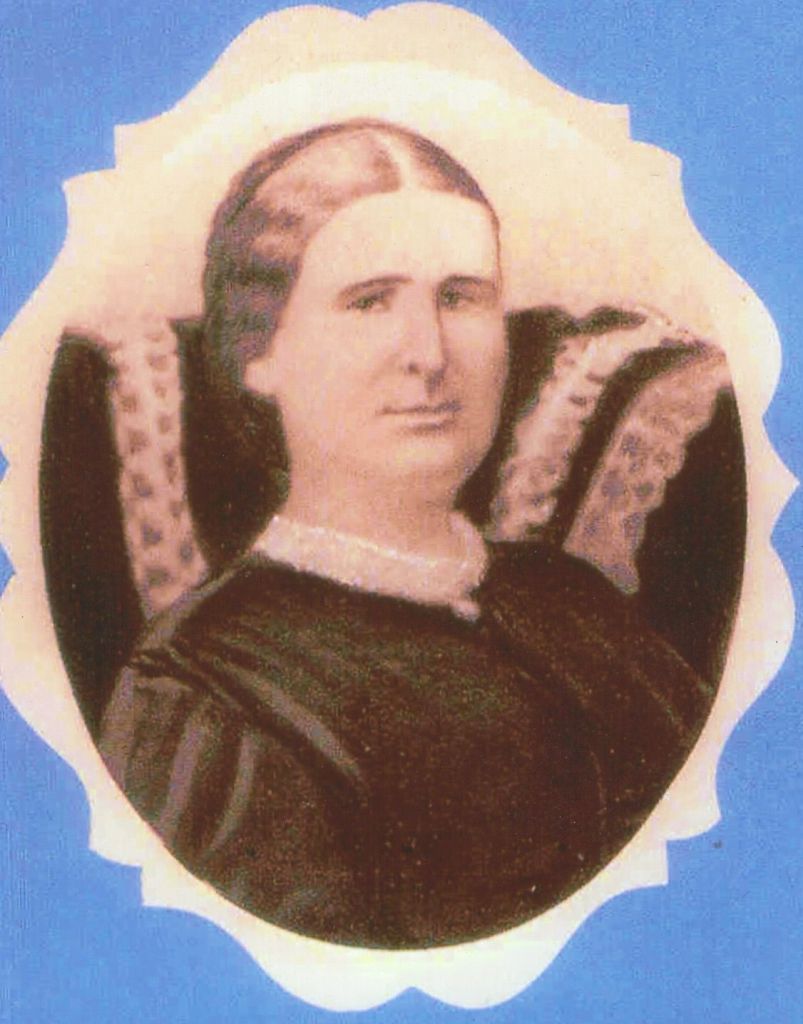
Catherine Ventura
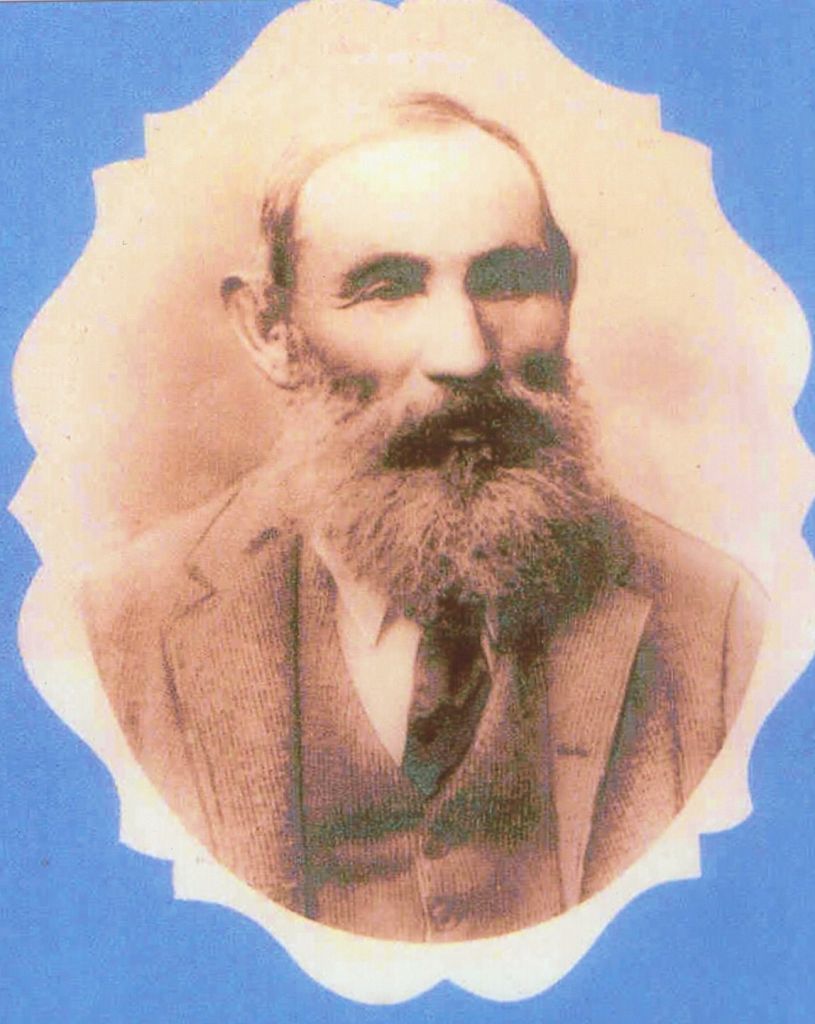
Frances Ventura
Catherine and Francis had seven children, two of these children died in infancy. Narciss was born on the
24th of November 1864 and died on the 30th of November 1864, Francis Terence born 28th January 1866, Margaret Hope born 4th January1869, Margaret was to become Tom O’Briens mother. Lucy Catherine born 1871, Susan Ellen born 10th September 1873,
Mary Frances Agnes born 8th of May 1876 and in 1881 there was an unnamed stillborn child. Catherine endured more grief in her lifetime than any person should have to bear. This obviously had a deep and profound effect on her mental wellbeing. It is no wonder that her life ended in such tragic circumstances in the York gum thicket on the 24th of January 1881.
The articles below are an insight into Catherine’s state of mind leading up to her tragic death.
Articles researched in Newspapers by Steven O’Brien, Librarian, Perth
Victoria Express, Wednesday July 28, 1880
ACCIDENT AT SEA: A woman named Ventura, who was a passenger on the Rob Roy , on her last trip to this port, jumped overboard, about half-past four on Tuesday afternoon. A boat being lowered with much smartness, she was picked-up, not much the worse for her immersion and the Rob Roy was delayed only some quarter of an hour
Geraldton Observer, Tuesday, December 28, 1880
Mrs Ventura, the wife of settler on the Back Flats wandered from her home on Sunday last week, and every effort was made to track her failed until Sunday last, when she was found at Nagabee, within three mile of Glengarry.
The Victorian Express, Wednesday, December 29, 1880
STRANGE DISAPPEARANCE: Mrs Ventura, whose freak in jumping overboard from the Rob Roy ,some months ago was noticed in this journal, has disappeared unaccountably from her home, since Sunday 19th inst. Up to the time of going to press nothing has been heard of the unfortunate woman, although as may be supposed, diligent search has been made for her.
The Victorian Express, Wednesday, January 26, 1881
SAD DEATH: We have to record the sad death of the unfortunate woman, Mrs Ventura, who some time ago endeavoured in a fit of insanity, to drown herself by jumping overboard from the Rob Roy, while on voyage from Fremantle. The poor woman has on more than one occasion since her return to the flats, wandered away from her home. Steps were taken to consign her to the Lunatic Asylum, but these are now too late, for she again left her home, and on Monday morning last, was discovered by a shepherd, James Little, quite dead, in a field near her husband’s farm.
The Geraldton Observer, Tuesday, February 1, 1881
THE LATE MRS VENTURA: We have received from a correspondent at Greenough a letter signed ‘A Friend’
commenting upon the report of the sad death of the late Mrs Ventura, as it appeared in the Express of the 26th ult., and contradicting the statement that the body had been found in a field near her husband’s farm. It was found in a York gum thicket, about three and a quarter miles from her home, in a north-westerly direction. We are quite sure that the Express never intended to make it appear that the public attacked blame to any member of the family, on the contrary, we feel certain that a general feeling of sympathy is widespread, and that credit is given to every member of the bereaved family for having done all that was possible in their search.
Police Gazette, Western Australia, Wednesday, February 2, 1881
At the Greenough Flats, on 26th ult., before E.H.Lawrence, R.M and Coroner, on the body of Catherine Venturer (sic), was found dead near her husband’s residence, Back Flats, on 25th ult. Verdict – ‘Death from exposure and want of food while wandering in the bush of unsound mind’

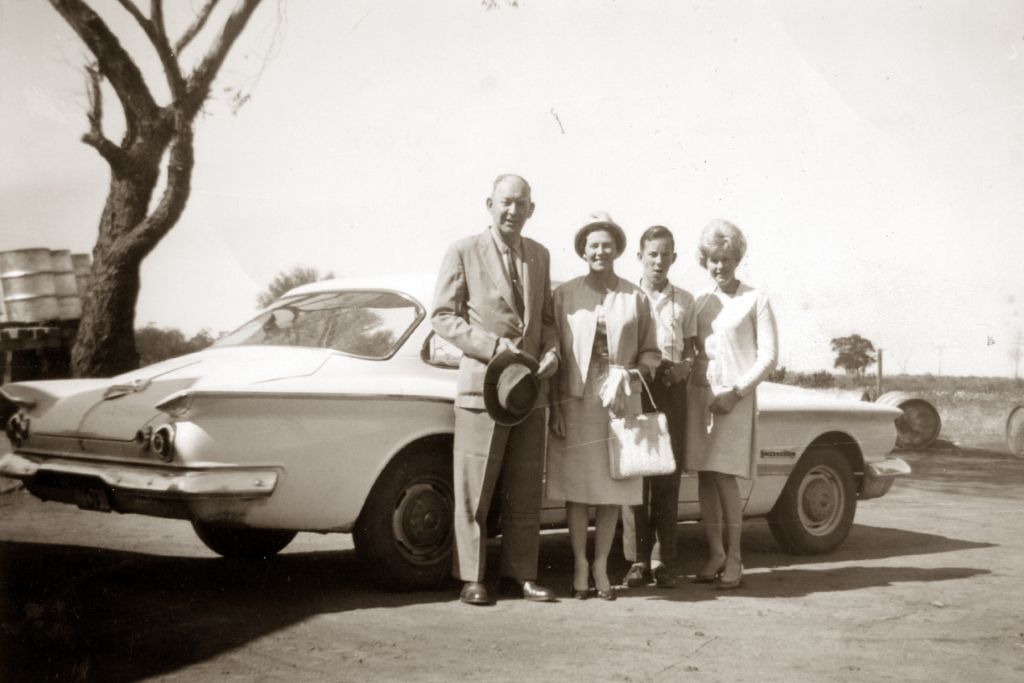
Comments
I remember going water divining with Uncle Tom as we called him it was at Digger Desmond’s at Moonyoonooka, I was a sceptic and Uncle Tom gave me the wire that he was using and showed me how to hold it , but it would not work for me. Tom took my right hand in his left I was holding the wire with my left hand and he had the other end of wire in his right. We walked along until we came across a stream under the ground I was no longer a sceptic . I still remember that day the strength that wire tugging was like no other, I could not hold it the wire just twisted in my hand and pointed straight to the ground.